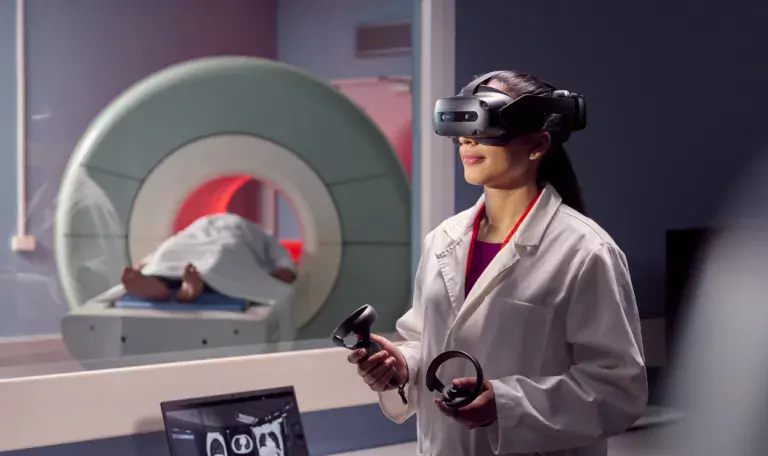The healthcare industry is redefining how facility-based care is delivered and whether those facilities are always necessary. Some factors contributing to evolution include an ever-expanding aging population, dwindling availability of healthcare resources, and more patients needing hospital at home (HaH) services for convenience or because they are unable to use an assisted care facility.
While neither HaH programs nor telehealth solutions are new, this past year has seen widespread adoption and expansion of use by both clinicians and patients.
Moreover, the Centers for Medicare and Medicaid Services (CMS) recognizes the benefits of hospital at home initiatives early on and introduced its temporary Hospitals Without Walls program.
In response to a surge in hospitalizations over the past two years, CMS announced its Acute Hospital Care at Home program in November 2022. In doing so, capable hospitals were given the ability to treat appropriately selected patients with inpatient-level care at home.1
Lower Cost, Better Outcomes
Over the last decade, many physicians have advocated for HaH programs. Until recently, acceptance has been slow. Part of the challenge was a lack of proven evidence that the promises of hospital at home initiatives were indeed true.
In 2021, a systematic review and meta-analysis were completed of randomized clinical trials that compared the effectiveness of HaH interventions versus in-hospital stays for patients with chronic disease. These nine studies included adult patients with COPE and acute infections, heart failure, chronic obstructive pulmonary disease, or asthma.
Study results suggest that HaH interventions represent a viable substitute for an in-hospital stay for patients with chronic diseases who were admitted to the emergency department. These patients had at least one visit from a nurse or physician. Hospital at home interventions also had a 26% lower risk of hospital readmission as well as a lower risk of long-term care admission than those who received in-hospital care. As an added benefit, patients treated at home demonstrated lower rates of depression and anxiety.2
Another recent study put the risk-adjusted cost reduction of home care management at 19%. Cost savings are thought to be achieved by the reduced length of hospitalization, decreased number of consultations, reduced nursing labor costs, and decreased clinical testing.3
Innovating for Hospitals of the Future
Bruce A. Leff, M.D. is a professor of medicine and the head of the HaH program at Johns Hopkins University School of Medicine. He is also a staunch advocate for hospital at home programs. In a recent interview with the American Association of American Medical Colleges (AAMC), he predicted that hospitals will only be ERs, ORs, and ICUs in the future. Everything else will occur in the community.4
Achieving this vision requires multiple stakeholders across the continuum of care – regulatory bodies, payors, health systems, clinicians, and patients – to accept the possibility of rethinking the current system of care delivery and patient management.
But health systems across the country are proving that HaH programs work. Those that have been easily able to pivot and offer a hospital at home program credit their existing technology and telehealth infrastructure.
Among them is Charlotte, NC-based Atrium Health, which launched its program in March 2020, after a two-week planning period. The unique aspect of the Atrium program is that it focused on treating COVID-19 patients who would otherwise require hospitalization.
Using its existing telemedicine, health IT platform, and EHR, as well as established interdisciplinary teams, Atrium’s ‘at home’ program, was able to admit 51,000 patients in the first 10 months of operation. The program has already expanded beyond COVID-19 patients and there is now a list of diagnoses to be considered for hospital at home care.5
Stephanie Murphy, DO, who directs Atrium’s hospital at home program shared that its success is the result of aggressively using virtual care and community paramedic visits, as well as IV medications in the home.6
What’s Next?
For technology leaders, hospital at home programs create a tremendous opportunity for innovation. The pandemic has provided a real-world test case for the true power of health technology, most specifically those solutions that enable virtual care management and remote patient monitoring.
Given the acceptance and adoption of these solutions by both clinicians and patients, we can predict that some telehealth and remote monitoring initiatives will remain in place. As we venture forth into a new hybrid care reality, there is a real chance for transforming the healthcare system in a way that reduces the burden of cost, while maintaining the highest standards of care.
The Importance of Secure Solutions
As hospital at home programs continue to thrive, one critical question, among many, arises. Can data be collected in a manner that supports secure and consistent communication among the various parties involved in supporting patient care?7 Most of the technology required to support care at home is familiar to clinical and IT leaders, including the security tools to keep data safe.
Using technology like the ThinkPad T14 Gen 3 or the ThinkPad L13 Yoga Gen 3 makes remote healthcare not only possible but secure as well. As new Windows 11 devices powered by the Intel® vPro® with 12th Gen Intel® Core™ processor, Lenovo delivers strong alignment between hardware and software to keep your device, operating system, applications, identities, and cloud service protected. Learn more at www.lenovo.com/health.






